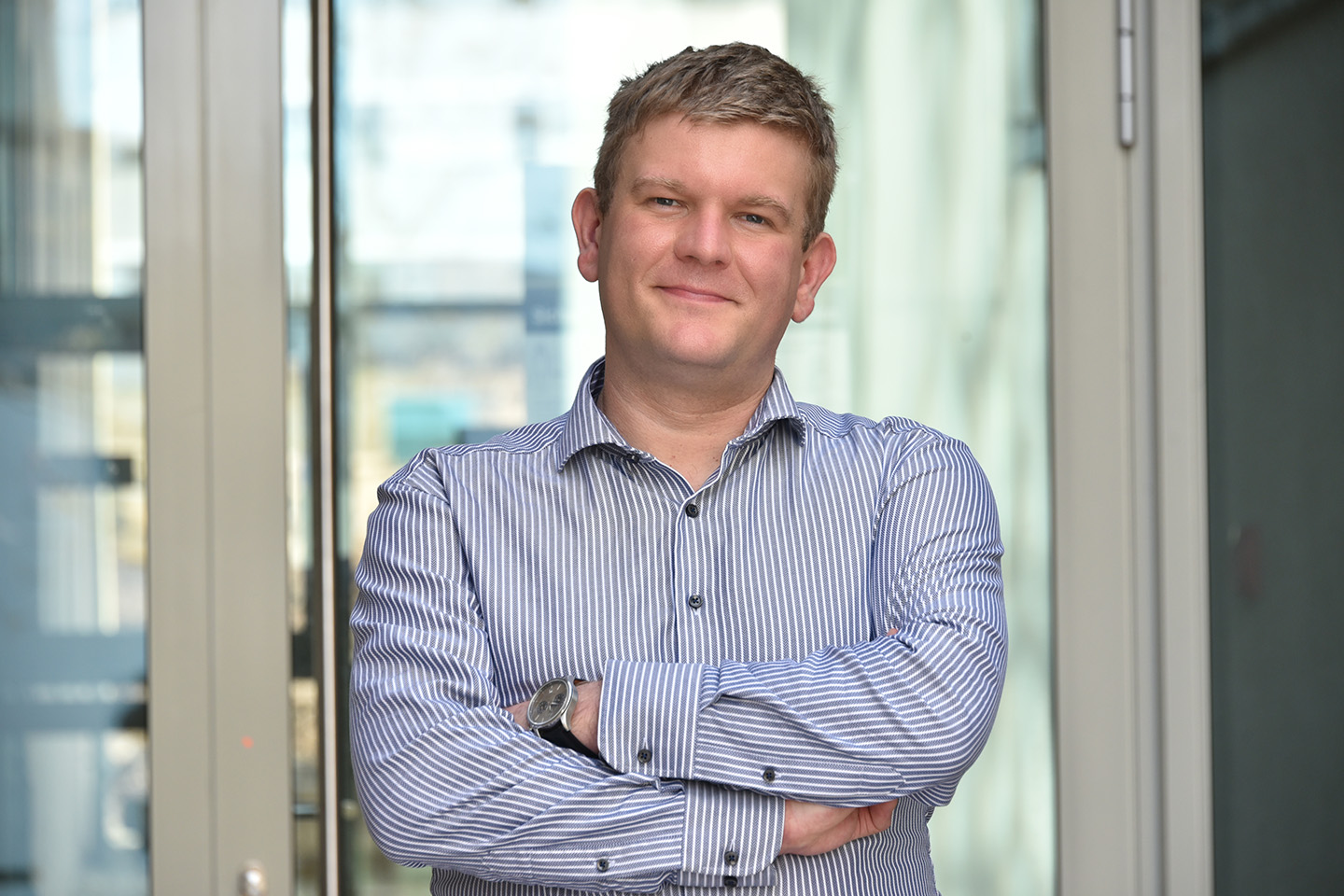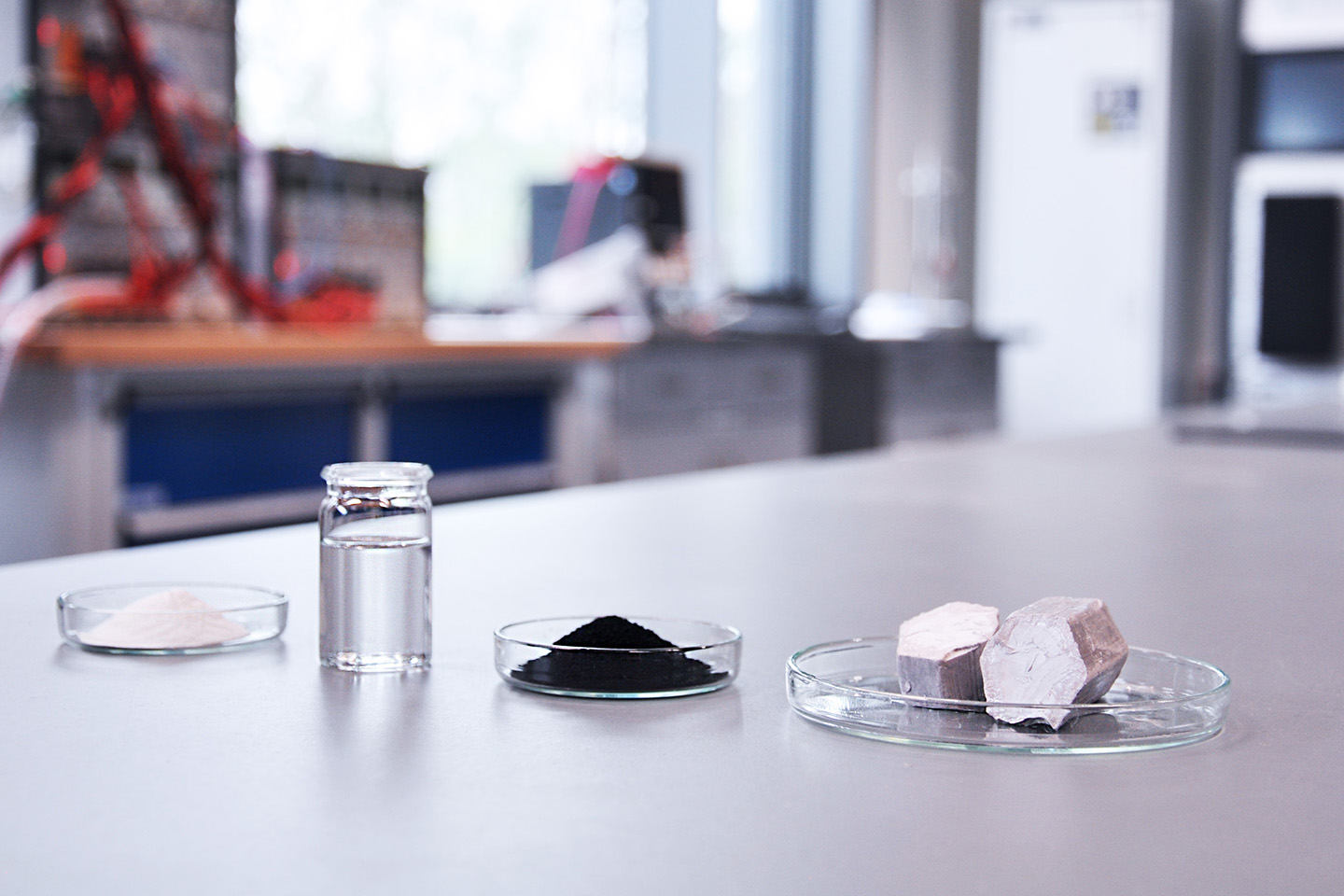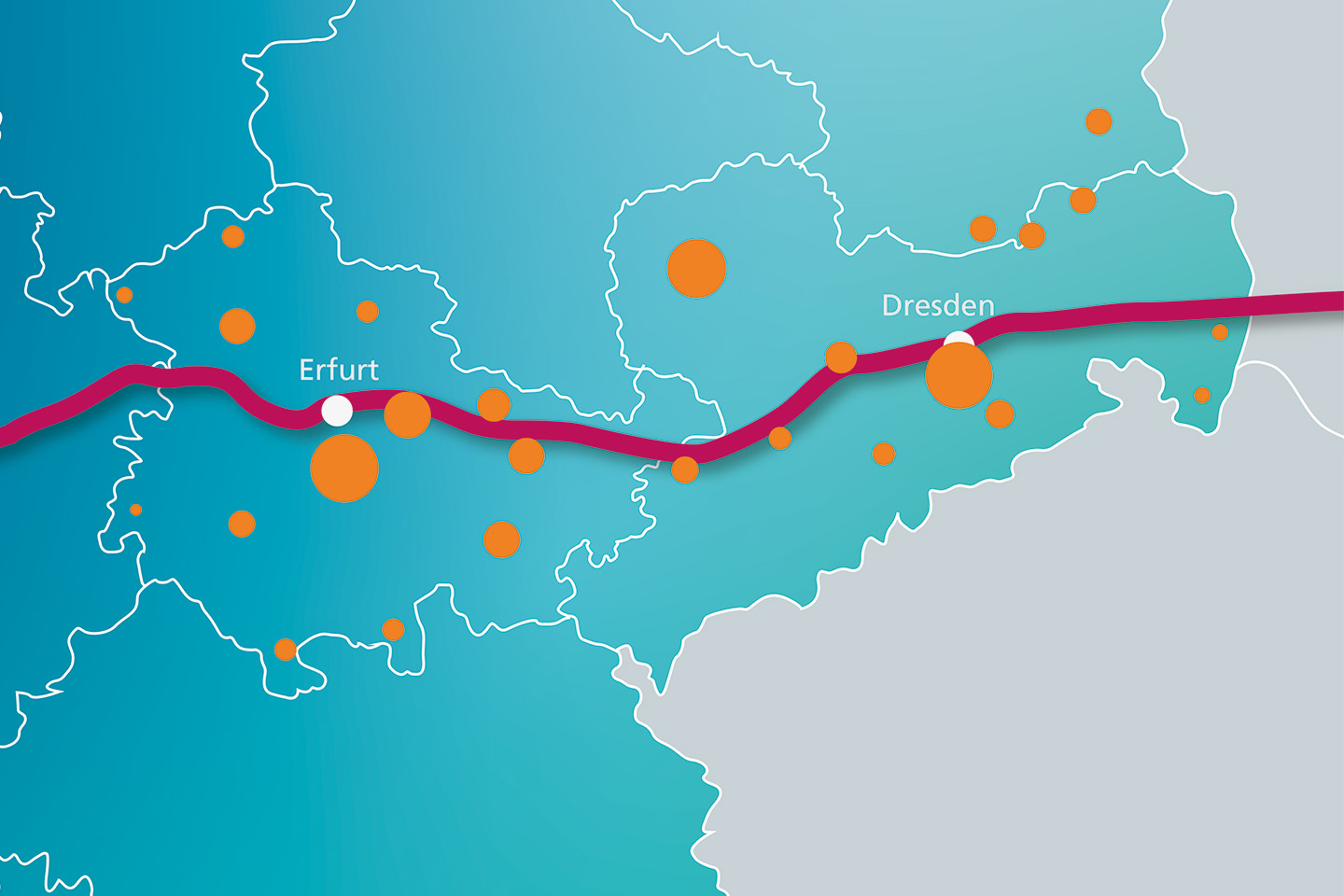Author: Fanny Pohontsch
When will sodium-ion batteries be launched in Germany?
The necessary moment for the scale-up of sustainable battery technologies was yesterday. In China, cars with sodium batteries are already on the market. Yet Germany itself is only the blink of an eye away from launching them – if the right course is set now. The decisive aspect here is the intelligent use of regionally and technologically diversified know-how. The ”New Via Regia of Batteries“ holds opportunities.
With Prof. Dr. Michael Stelter and Prof. Dr. Martin Oschatz


There are two aspects driving German industry in times of transformation: a neutral carbon footprint with significantly reduced costs for new products. To achieve these goals, it is essential to rethink trade relations, production processes, technologies and resources used. The pursuit of climate targets and the automotive industry's shift away from the internal combustion engine will see the global battery market grow by 30 % annually to 4700 GWh by 2030, up from 700 GWh today, according to a McKinsey study. A battery is never just a means to an end. So far, a battery harbors untapped sustainability potential. The key lies on our doorstep: sodium.
Sodium-ion batteries offer opportunity for value creation in Germany
”Thanks to its unique properties, a sodium-ion battery allows us to hit the reset button, so to speak, on the conventional way of thinking about and using batteries. With sodium batteries, we can suddenly make use of an indigenous raw material base that is independent of strategic, even critical, imports. The required technological infrastructure is also in place. This is the opportunity for value growth in Germany!" says Prof. Michael Stelter of Fraunhofer IKTS and Director at the Center for Energy and Environmental Chemistry CEEC at Friedrich Schiller University (FSU) in Jena. "I am absolutely convinced of this after more than ten years of sodium battery research!”.
"All the individual value-added steps for the development and production of batteries are already mapped out from western Thuringia to eastern Saxony along the A4 highway. Like a string of pearls, thousands of person-years of experience are gathered here. […] Today we can speak of a New Via Regia of batteries."
Germany has created significant beacons of battery technology in recent years. “If we look at Thuringia and Saxony alone: these states have covered enormous groundwork and invested, for example, in the Battery Innovation and Technology Center BITC. All the individual value-added steps for the development and production of batteries are already mapped out from western Thuringia to eastern Saxony along the A4 highway. Like a string of pearls, thousands of person-years of experience are gathered here.”
In the Middle Ages, the Via Regia – a road that was central to the technological and economic development of the region – ran along what is now the A4 highway. “Today, we can speak of a New Via Regia of Batteries,” says Michael Stelter. “This potential just needs to be strategically coordinated between industry and research to move as quickly as possible into large-scale commercialization of sodium-ion batteries. Bright minds, excellent materials development and cell research, manufacturing plants and production, mechanical engineering and, above all, the raw materials - everything has been there for a long time and in full force.”
According to data from the Saxony Trade & Invest Corporation and the State Development Corporation of Thuringia, more than 200 players from battery research and industry are located on this axis. Current projects such as the Battery Education Network of Central Germany and BeaT, both of which are funded by the Federal Ministry of Economic Affairs and Climate Action (BMWK), are already ensuring the further recruitment and qualification of skilled employees.
Regional raw materials and upcycling of biogenic waste: composition of sodium-ion batteries
With regard to materials, sodium is actually available in Germany in unlimited quantities and thus at low cost, e.g. in the form of sodium chloride, i.e. common salt. In a sodium-ion battery, similar operating principles prevail as in a lithium battery – both concepts are based on alkali metal ions as charge carriers. Experts know this chemistry well. They also draw on experience from related technologies, such as the ZEBRA battery from the 1990s.
“Cell chemistry is crucial for relevant power density. We understand how electrode processes differ between lithium and sodium,” says Martin Oschatz, chemist and holder of the Chair of Chemistry of Materials for Energy Applications in Jena. “Hard carbons have a special affinity for sodium and high plateau capacities on the anode side. Due to their internal porosity, we increase the surface area and generate maximum storage volumes for sodium ions. As a result, a battery achieves high energy density. This starts at the nanometer level.”
Hard carbons are amorphous types of carbon. They replace graphite and are produced by simply heating suitable starting materials – in particular carbon-containing biogenic waste, such as nutshells or brewers' grains. In 2019, 1.5 million metric tons of these were produced in Germany alone. On the cathode side, researchers use Prussian white, among others. This is a dye that has also been known as Berlin blue for 100 years and consists of iron, carbon and nitrogen, elements that are just as readily available.
So what about the issue of recycling the sodium-ion battery if the raw materials used are per se environmentally friendly, non-critical and inexpensive? According to Michael Stelter, recycling is much easier with sodium-ion batteries than with lithium batteries because the cells do not contain copper and cobalt. “Recycling is therefore only needed for the few valuable metallic elements of the battery. So in addition to iron, we're talking about aluminum in particular, which we use as a current conductor. But certainly interesting for the environmental footprint in recycling would be the upstream syntheses of the battery materials with the potential to recover them directly.”
Use of sodium-ion batteries in low-cost electric cars and private households
With the sodium-ion battery, experts are initially addressing mobility, followed by private households and industry. “Electric micro, small and mid-range vehicles – simple, inexpensive cars that don't need to reach 800 km for their purpose: that's a huge market that can't be served at all with the sophisticated, expensive lithium technology and that is much more valuable in terms of the mobility transformation”, says Stelter.
According to ADAC e.V., the average listing price for an electric vehicle in the small car segment is currently €36,400. By using sodium-ion batteries, production costs could be reduced to such an extent that affordable electric cars could also roll off the production line in Germany in the future. “In most cases, this develops in parallel: anyone who produces such batteries can basically also offer them cheaply to private households with 10-kWp solar systems on the roof or use them as industrial electricity storage units,” adds Martin Oschatz. The price development for the critical components in lithium-ion batteries will be decisive for the cost advantage of sodium technology in the coming years.
“With a concentrated cluster approach encompassing the entire technology chain, industrial mass production of sodium-ion batteries could be brought about in Germany within five years.”
However, he considers the idea of being able to catch up with China to be illusory: “That is no longer possible at all in the short term and on the basis of established technologies. Almost 90 % of the patents relating to sodium technology come from China. What we are experiencing now is a wake-up call; that we have to take the helm again with creative technological ideas and solutions and get into action!” In this context, the two researchers emphasize the urgent need for regionally and technologically diversified funding of environmentally friendly battery technologies: “By leveraging the various potentials and strengths of different players in the industry, we can jointly accelerate development and technology transfer. With a concentrated cluster approach encompassing the entire technology chain, industrial mass production of sodium-ion batteries could be brought about in Germany within five years. The New Via Regia of Batteries can be a springboard here.” A two-digit million sum is needed for the rapid transfer of technology, he says.
To sum up: Germany meets all the requirements for the success of sodium-ion batteries. Now, further political support and cooperation between industry and research will determine how quickly the batteries will reach the market here as well. Either way, says Martin Oschatz, he and Michael Stelter are pushing every lever they can to advance this technology. “Because if there's one thing we're convinced of, it's sodium-ion technology.”
|

